AWS ElastiCache
 Codefy Labs
Codefy Labs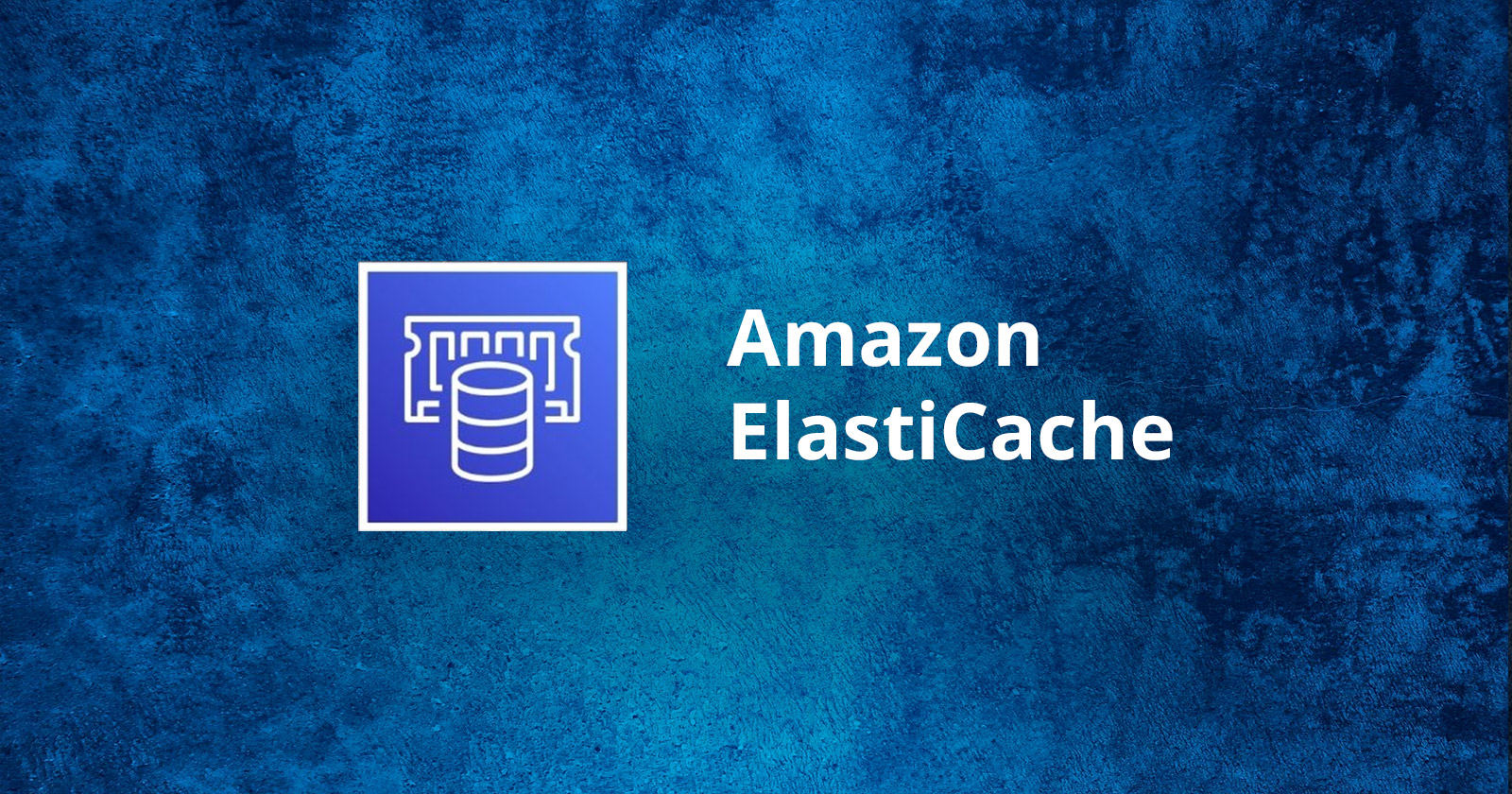
Amazon ElastiCache is a caching service provided by AWS that boosts your application's speed by storing data in memory. It works with two popular systems, Redis or Memcached, to help manage data efficiently. ElastiCache handles routine tasks such as setting up hardware and updating software automatically. It also works well with other AWS services. By improving data access speeds and decreasing the burden on databases, ElastiCache supports applications that need real-time operations, making it perfect for environments that require high performance.
ElastiCache supports two open-source in-memory caching engines:
Redis: Offers persistence for its cache, supports more complex data structures, and is ideal for scenarios requiring advanced data operations and high availability features.
Memcached: Optimized for simplicity and speed, best suited for simpler caching scenarios where large chunks of data need to be cached and quickly retrieved without the need for persistence.
Key Components of AWS ElastiCache
1. Nodes:
The smallest building block of an ElastiCache deployment.
Each node runs an instance of the specified caching engine and has its own DNS name and port.
You can run a cluster with multiple nodes for Memcached or a single-node or a multi-node setup for Redis.
2. Clusters:
A cluster is a collection of one or more nodes. Each node contains its instance of the Memcached or Redis caching engine.
In Redis, you can enable replication within a cluster to create a primary node with multiple read replicas for read scalability and data redundancy.
3. Engine Versions:
- ElastiCache supports different versions of Redis and Memcached, allowing you to choose based on compatibility or specific features.
4. Parameter Groups:
- Settings that control the behavior of your nodes. You can manage parameters such as memory usage and item size.
5. Security Groups:
- Act like firewalls, controlling access to clusters based on IP address and network port. They ensure that only allowed IP addresses can access your cache nodes.
6. Subnet Groups:
- Define a collection of subnets (within your VPC) that you can designate for your ElastiCache clusters, which helps in controlling network access and optimizes performance.
7. Snapshots:
- For Redis, you can take snapshots of your database to back up and restore data. Memcached does not support snapshots since it is designed purely for ephemeral data storage.
8. Scaling:
Redis: Supports scaling vertically (resizing) and horizontally (adding read replicas).
Memcached: Primarily scales horizontally by adding more nodes to the cluster.
9. Monitoring and Maintenance:
AWS provides tools like CloudWatch for monitoring the performance of your ElastiCache resources.
Automatic software patching and updates are managed by AWS, ensuring that your caching environment is secure and stable.
Usage Scenarios
Session Stores: Caching session data to ensure fast access and improve user experience.
Leaderboards/Counting: Quick retrieval and updating of scores or counts in gaming or social networking applications.
Data Caching: Decrease database load by caching the most frequently accessed data.
Real-Time Analytics: Providing a real-time analytics backend to power fast data insights.
AWS ElastiCache, through its support of Redis and Memcached, offers flexible options tailored for different caching needs, from basic large-object caching to complex data types with persistence and advanced data processing capabilities.
Choosing Between Memcached and Redis for AWS ElastiCache
When deciding between Memcached and Redis as your ElastiCache solution, it's crucial to match the tool to your specific requirements. Both offer unique advantages, tailored to different caching needs.
Memcached: The Simple, Scalable Caching Solution
Ease of Use: Memcached is straightforward and ideal for basic caching requirements.
Multithreading: This feature enables Memcached to handle high loads effectively by using multiple CPU cores.
Handling Large Objects: It is well-suited for caching large objects.
Scalability: Memcached excels in horizontal scaling, allowing you to add more nodes to the cluster as needed.
Redis: Rich Features for Complex Data Management
Data Persistence: Redis can save its state to disk, which means it can recover its data after a service restart.
Advanced Data Structures: Redis supports diverse data types, including lists, sets, and sorted sets, which are essential for complex data manipulation.
Replication: It offers master-slave replication to enhance read scalability and data redundancy.
High Availability: Redis ensures high availability with features like Redis Sentinel and automatic partitioning with Redis Cluster for robust data management.
How to Choose?
Opt for Memcached if:
You seek a straightforward caching solution without the need for data persistence.
Your primary requirement is to cache static data in large volumes.
Scalability is crucial, particularly through adding more cache nodes.
Choose Redis if:
Your application requires handling complex data types and operations, such as data sorting and ranking.
You need to preserve your cache data across restarts.
Advanced control over data expiration and eviction is necessary.
Your setup demands high availability and the ability to handle read-heavy workloads with replicas.
Understanding the strengths of each option will help you tailor your caching strategy to fit your application's needs, ensuring optimal performance and efficiency.
Let's dive into a hands-on lab and set up an ElastiCache cluster using Memcached.
Go to the ElastiCache dashboard in the AWS Management Console.
Click on the “Get Started” button.
Select “Memcached” as your cluster engine.

Choose the Creation Method
Opt for "Design your own" to manually configure your cache settings, giving you full control over the setup.
Easy Create vs. Standard Create
Easy Create simplifies the setup with pre-selected defaults, ideal for quick deployments.
Standard Create offers detailed customization for in-depth configuration needs.
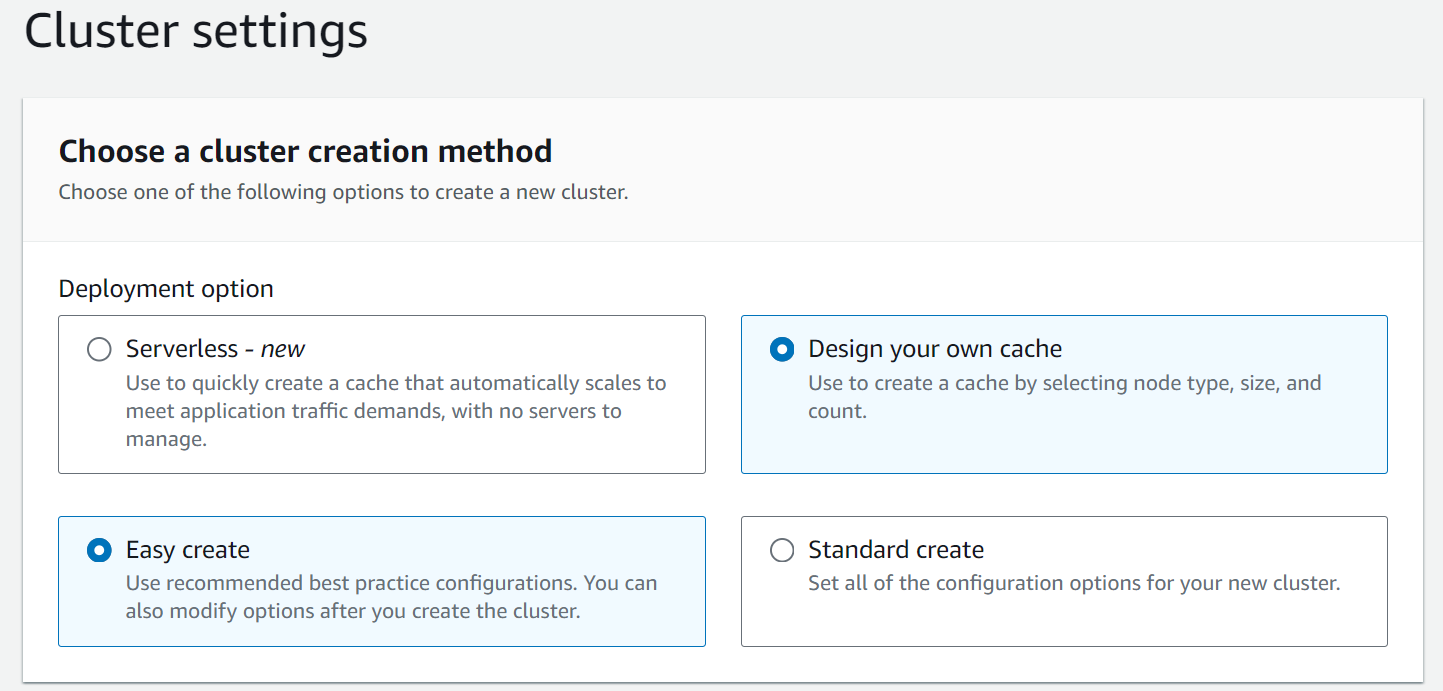
Cluster Information - Assign a unique name and provide a brief description to identify and describe the purpose of your ElastiCache cluster.
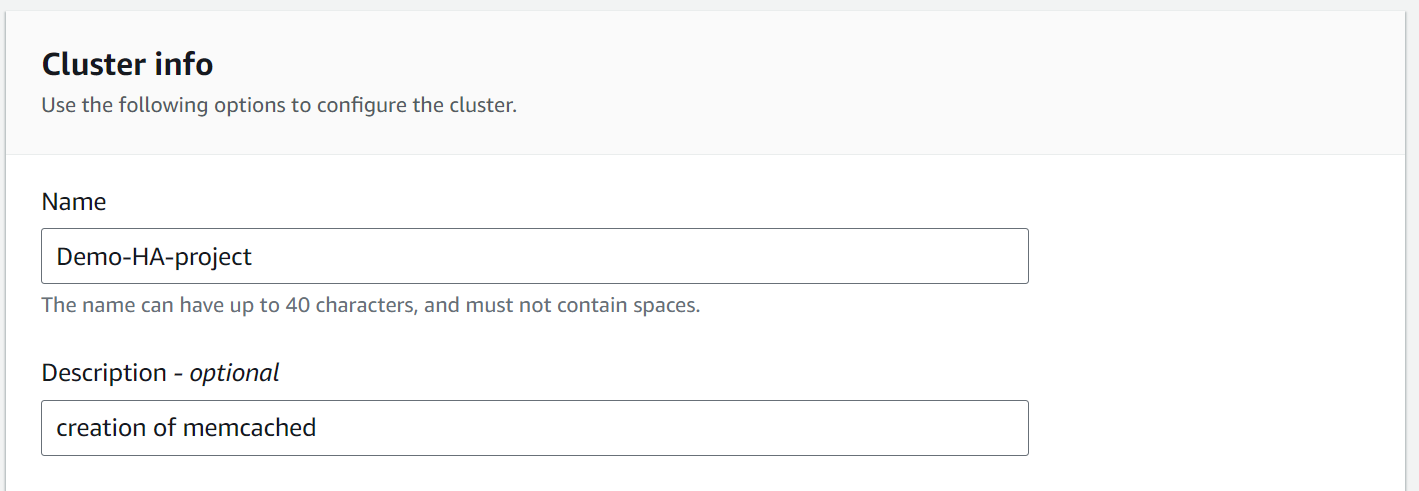
Connectivity - Choose a VPC, subnet group, and security group to define network access and connectivity for your ElastiCache cluster.
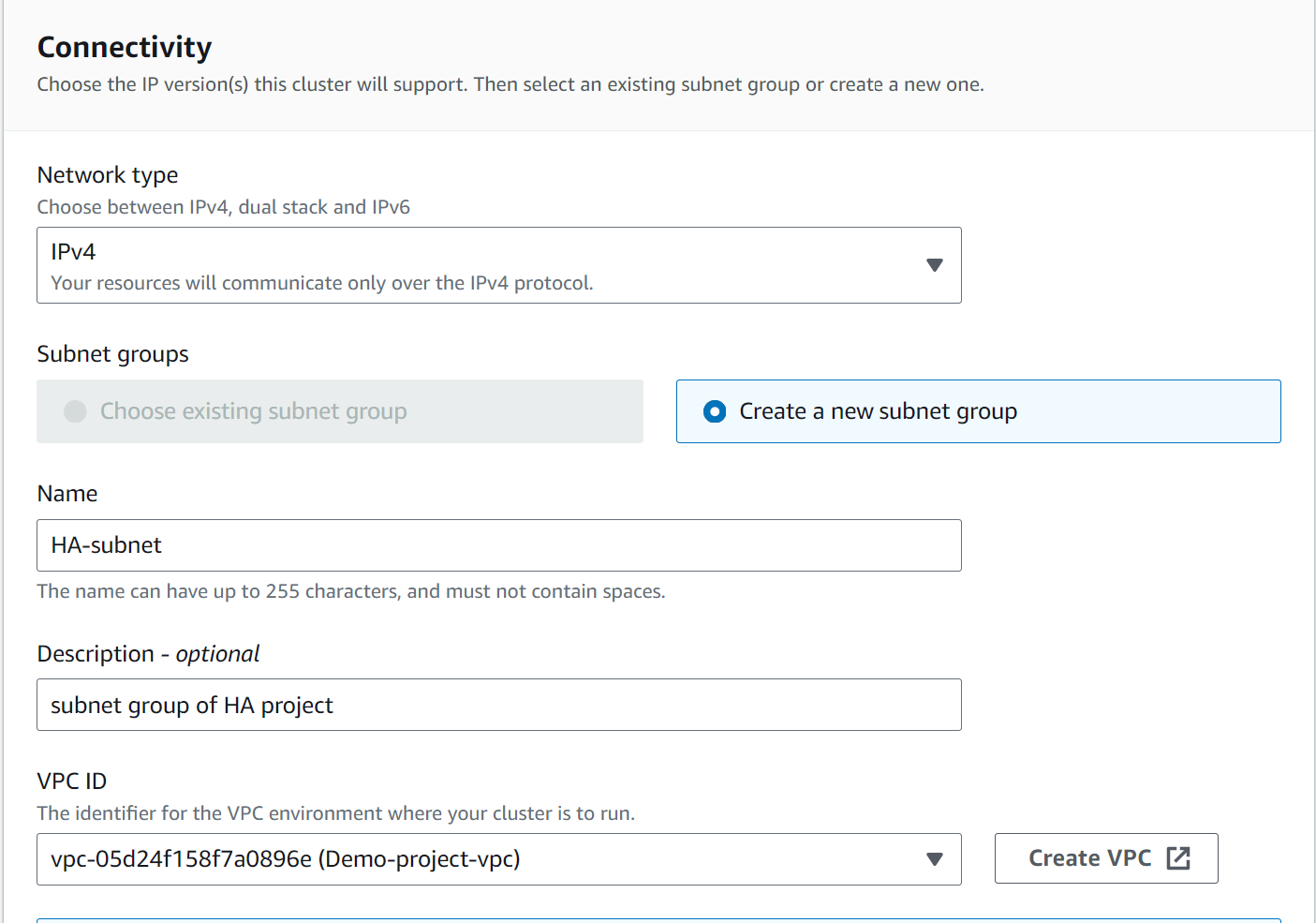
Configuring your ElastiCache cluster in a private subnet will enhance security by isolating it from public internet access.
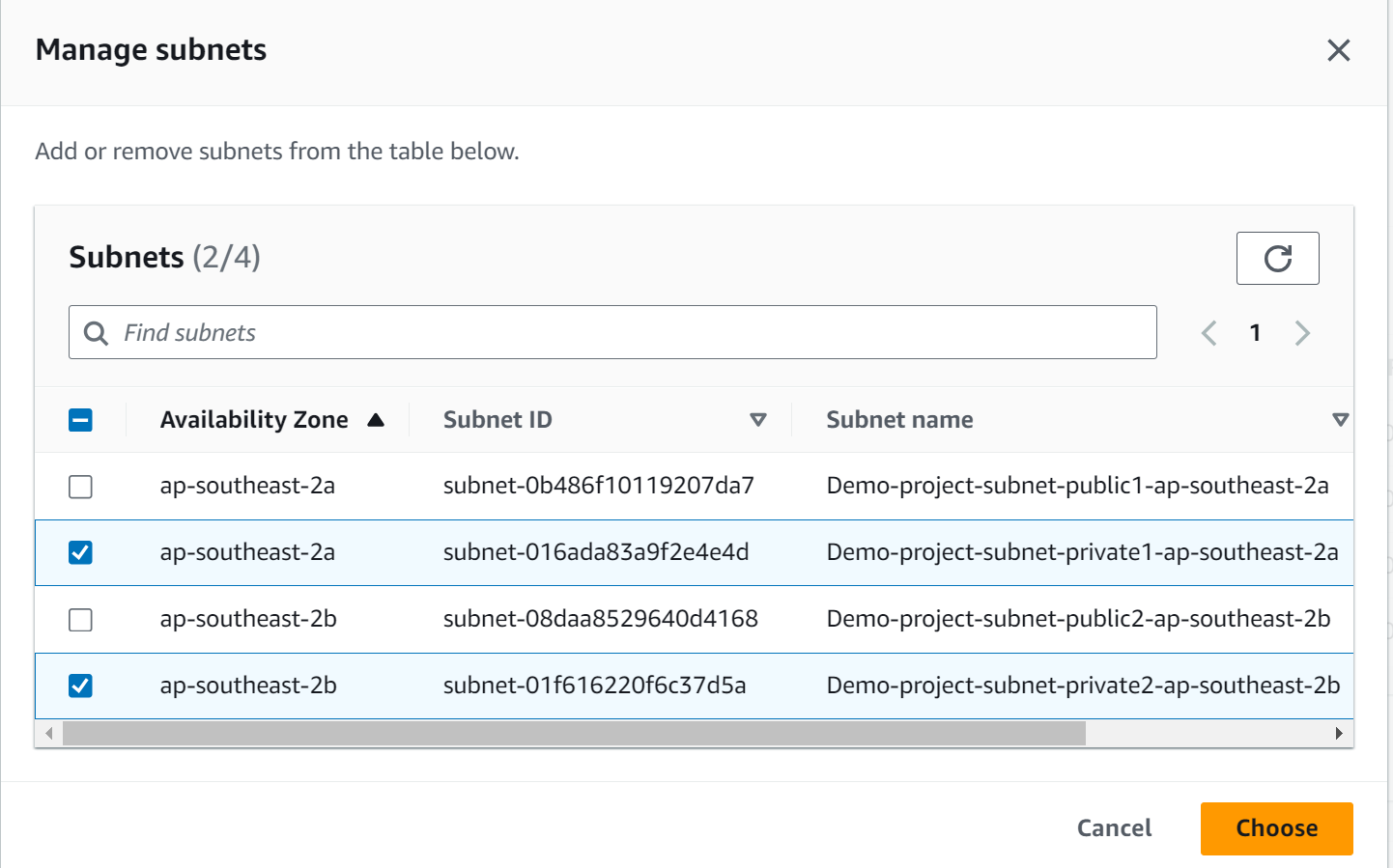
Review Default Settings : You can view and verify your default settings, ensuring that your cluster is configured as intended before proceeding with the final setup.

Click on "Create" to launch your cluster. If you want to add tags for easier management and organization, you can do so before completing the setup.
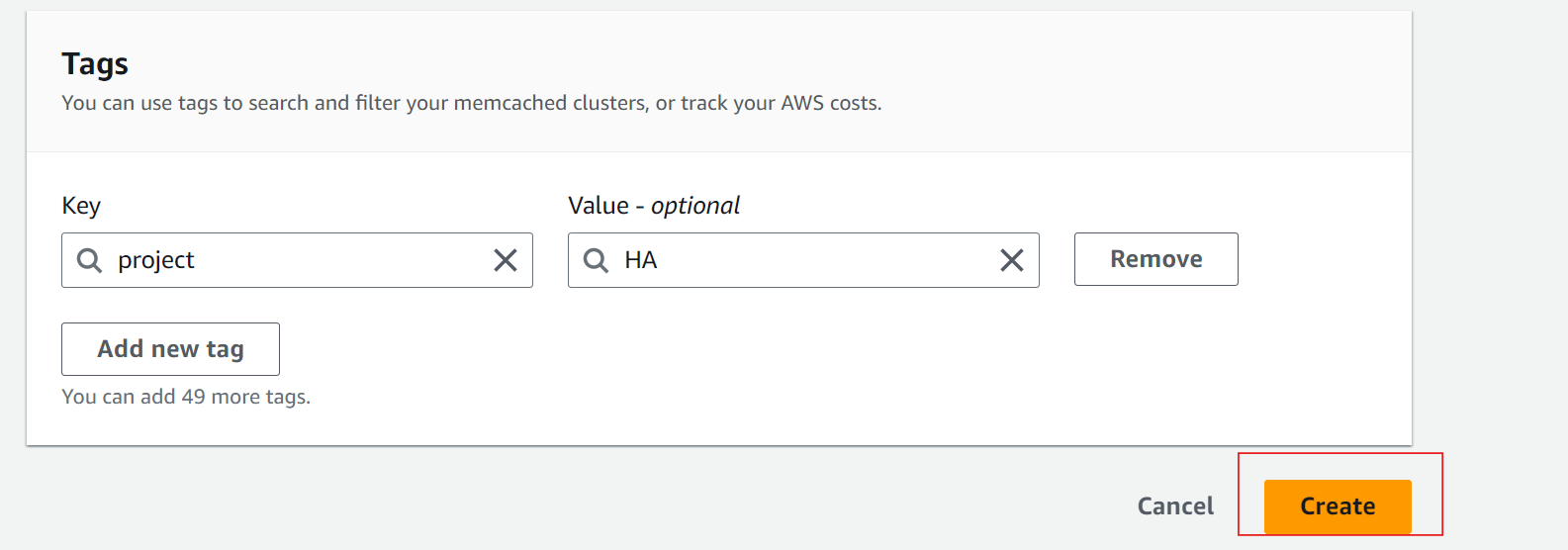
Your ElastiCache Cluster is Ready
- Your ElastiCache cluster is now ready for use. You can connect to it using the provided configuration endpoint to start caching data.
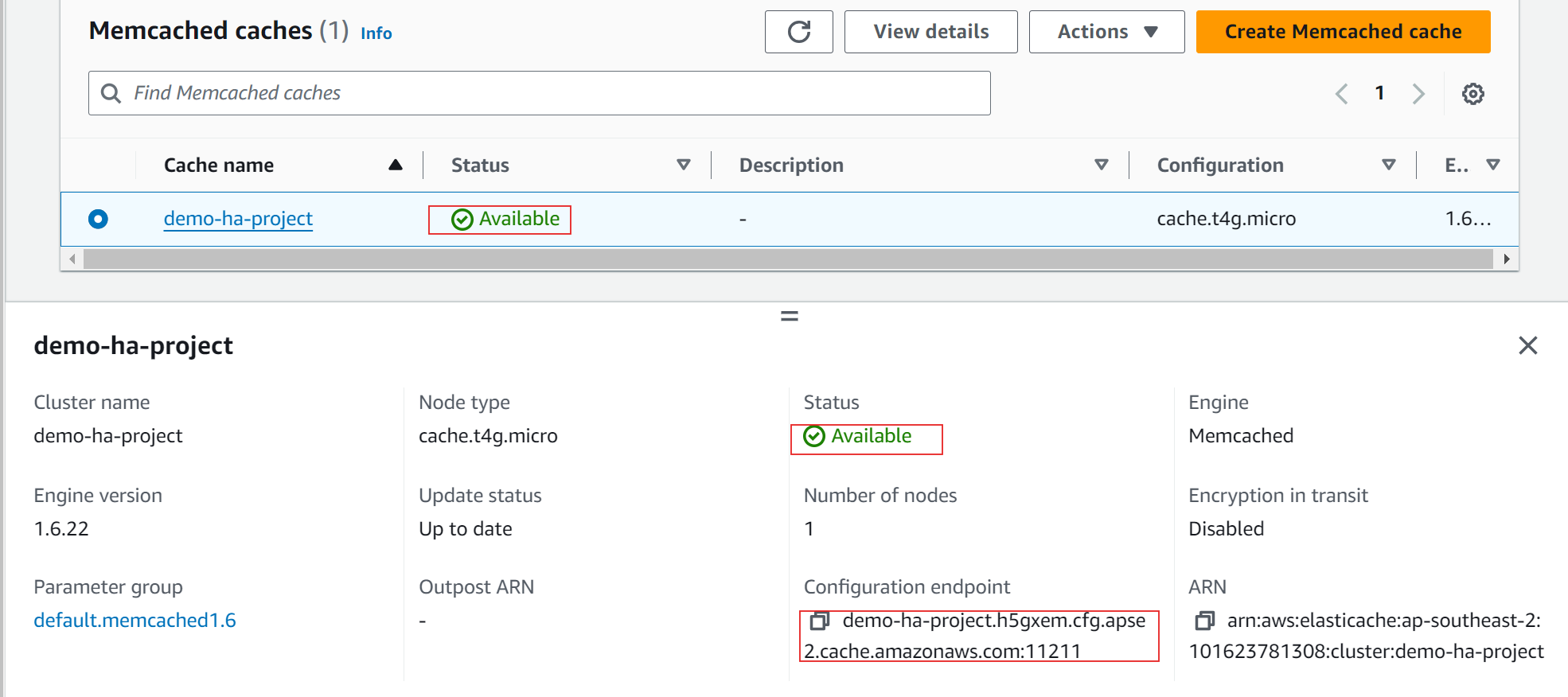
Note: Ensure that your security group allows traffic on the default port number (11211 for Memcached) to enable proper connectivity.
Subscribe to my newsletter
Read articles from Codefy Labs directly inside your inbox. Subscribe to the newsletter, and don't miss out.
Written by

Codefy Labs
Codefy Labs
We build products that scale